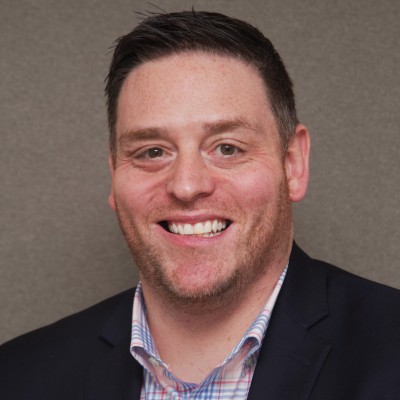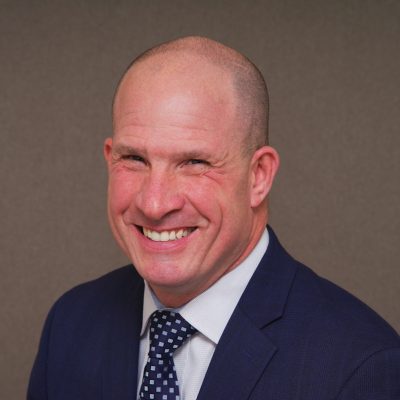
Listen to the Episode
The Future of EHR Documentation
A roundtable discussion with Enovate and “Healthcare IT Today”
Healthcare IT Today seeks out first-hand experiences to create actionable insights for its readers. Recently, John Lynn, the Founder and Chief Editor of the publication, sat down with Enovate’s Kevin Bridges, VP of Marketing and Business Development, and Marc LaFleur, VP of New Customer Development, to discuss the evolution of EHR documentation, mobile carts, and what the future holds.
The conversation covered advances in mobility, ergonomics, power capabilities, fleet management, and more. The core of the discussion recognized the critical role that today’s mobile EHR documentation workstations play and the importance of flexible mobile power, particularly in the time of COVID and the demands it puts on clinical workflows.
Mobile EHR workstations rise to meet the challenge of COVID
A mobile ‘Workstation on Wheels’ or WoW, may not appear to be the most sophisticated piece of technology in the hospital. Yet, it captures a constant stream of patient data in real-time at the bedside – data that runs both the clinical and business sides. In 2020, COVID placed new demands on workstation functionality and availability.
“It’s interesting the role workstations played from a COVID perspective,” Healthcare IT Today’s John Lynn asked Kevin Bridges and Marc LaFleur. “For example, a fixed workstation might restrict the ability for clinicians to enter a COVID patient’s room to use it. What role did you see workstations playing during COVID?”
“It was chaos up here in the Northeast,” Marc LaFleur recounted. “There was a lot of trial by error by a lot of health systems thinking that COVID would go on forever, so they overbought. Whether an organization had a mobile strategy or a fixed strategy, all of the sudden, they needed more. There was also a telehealth boom. We saw demand for fixed, mobile, hybrid, and telehealth.”
“During the COVID pandemic, when hospital doctors communicated to the community, a mobile cart was very often at their side,” LaFleur added. “These news reports demonstrated how mobile workstations are critical to patient care and how in a crisis, point-of-care EHR might need to be deployed anytime, anywhere within the hospital. Even outside in a COVID tent. To keep positive patients out of the four walls, hospitals were triaging patients into tents and parking garages, causing a sudden redeployment of EHR mobile technology, which underscored the importance of WoW mobility and visibility.”
The Future of EHR Documentation – Five Takeaways
- The pandemic highlighted the importance of having a mobile EHR documentation solution connected to an asset management platform to know what’s available enterprise-wide.
- Workstations on wheels have evolved with advanced power options for greater mobility and flexibility to meet multiple clinical workflows.
- Today’s mobile EHR carts are equipped with intelligent technologies and ergonomics that reduce physical and mental fatigue.
- Consider outsourcing the management and maintenance of WoWs with a subscription model as hospitals gain efficiency with outsourcing IT.
- Even with the move toward handheld devices and voice recognition, the mobile EHR workstation still plays a critical role for the foreseeable future.

Remote visibility for EHR workstations
“Today, we apply analytics to healthcare in so many different ways, and now we can apply analytics to every single piece of technology,” John Lynn said. “This is an enormous challenge that many healthcare organizations face – just managing what has been implemented.”
“The pandemic highlighted the importance of having a mobile EHR solution coupled with the visibility to know what is available across the enterprise,” Bridges explained. “We saw a lack of remote visibility. When we talked to hospitals, they often didn’t know how many mobile EHR workstations were in their fleet.”
“This is an expensive capital asset,” Bridges added. “We developed Rhythm, our asset management platform, to deliver remote visibility. We can tell administrators how many units they have, where they are, and where they should be when abandoned. We can also report whether they need repairs or not.”
The push toward managed services with workstations
“The other question many CEOs are asking is whether they should be in the desktop business at all? They already outsourced their data center business to the cloud, and now Enovate is offering something similar – a full-service and a managed option. Are healthcare organizations moving towards the managed service option? Or, are they still wanting to buy?” asked John Lynn.

“If you look at a hospital, almost everything is on the network – even the beds, believe it or not,” Kevin Bridges said. “So, somebody has to maintain it. As hospitals gain efficiency with outsourcing IT, they are now moving toward outsourcing the management and maintenance of workstations on wheels with a subscription model.
“Workstations on wheels have evolved with more durable designs and power options for greater mobility. The goal is to ensure clinical availability,” Kevin explained. “To this end, we provide Ready Replacements. By having on-site loaner workstations available, you can keep your clinical staff focused on their patients and reduce the service burden on your IT staff.”
“Tell me how your Rhythm management system interfaces with these shared services,” Lynn asked. “Does Rhythm see all these moving parts?”
“Absolutely,” LaFleur explained. “We contact the hospital saying, ‘Hey, we noticed one of our Ready Replacements was wheeled up to the fifth floor two hours ago. Do we need to schedule a technician?’ When we place these loaner workstations at the hospital, a nurse can have a replacement in her hands in minutes rather than hours. While she is busy using the loaner, we will dispatch one of our factory-trained technicians to make the repairs. So often, broken carts are abandoned in hallways and random closets, but we can see the need for a repair in real-time.”
How workstations support clinical efficiency
“Clinical efficiency and clinician burnout are hot topics right now,” John Lynn underscored. “Hassling with workstations only adds to the burden. What else are you doing to deal with efficiency and burnout for nurses?”
“We are developing workstations on wheels that utilize smart technologies that reduce the physical and mental fatigue that is common with conventional workstations,” Bridges said.
“Reducing fatigue is more than lightening the load of the battery and power system,” LaFleur said. “Placing medication bins on the workstation reduces footsteps to the medication storage room. We use Single Sign-On to eliminate the sharing of PINs and to track access to the medication bins. The nurse doesn’t have to worry that the meds will go missing from the workstation on her watch. Kevin and I are always looking for ways to reduce nursing anxiety because there’s so much fatigue in nursing.”
Will EHR documentation workstations be a thing of the past
“What can we predict about the future of the workstation?” John Lynn asked. “Are we looking at handheld devices with voice recognition to enter EHR documentation? Or will workstations continue to play the dominant role?”
“Kevin and I have been around a long time,” Marc said. “So, even though we have seen and heard it all, we know that change is inevitable.”
“Yes, but unless you build the hospital of the future from the ground up, you can’t get rid of the mobile workstation,” Marc continued. “We’ve talked to CIOs who proclaimed, ‘This is our last purchase of WOWs – the future is tablet-based.’ I agree that nanotechnology allows you to put vast computing power into the palm of your hand, but the input technology requires fingers. EHR documentation involves lots of fields and forms. The nurse will find it more efficient to navigate the complicated layout on her screen with a mouse and enter data with a full-sized keyboard. So, you have that challenge.
“What’s more, today, our mobile EHR carts are powering multiple, necessary devices – barcode scanner, specimen collection label printer, document scanners for ER registration, etc. You can’t hang all that hardware on your belt. For this reason alone, I see WOWs in our future.”
“Thank you both for enlightening our readers,” John Lynn concluded. “It’s exciting time to see how far EHR technology has evolved in the hospital setting.”

Marc LaFleur is the Vice-President of New Customer Development at Enovate Medical. For the past 13 years, Marc has guided his customers towards deploying, managing, and optimizing clinical workflows with mobile, point-of-care clinical E.H.R. workstations. Marc also oversees both the Northeast & Chicagoland markets and has been fortunate to consult his customers in nearly every state while at Enovate Medical. You can follow Marc’s on his LinkedIn account.

Kevin Bridges is the VP of Marketing and Business Development. Kevin leads Enovate Medical’s executive team in delivering new hardware, software, and service offerings to help acute care hospitals realize better outcomes on the investment in electronic healthcare record software. With the increased demand for efficiency within hospital operations, we are focused on enhancing clinical and IT support workflows as well as capital asset reduction and life cycle management. Follow Kevin on LinkedIn.

John manages Healthcare IT Central, the leading career Health IT job board. He also organizes the first of its kind conference and community focused on healthcare marketing,

